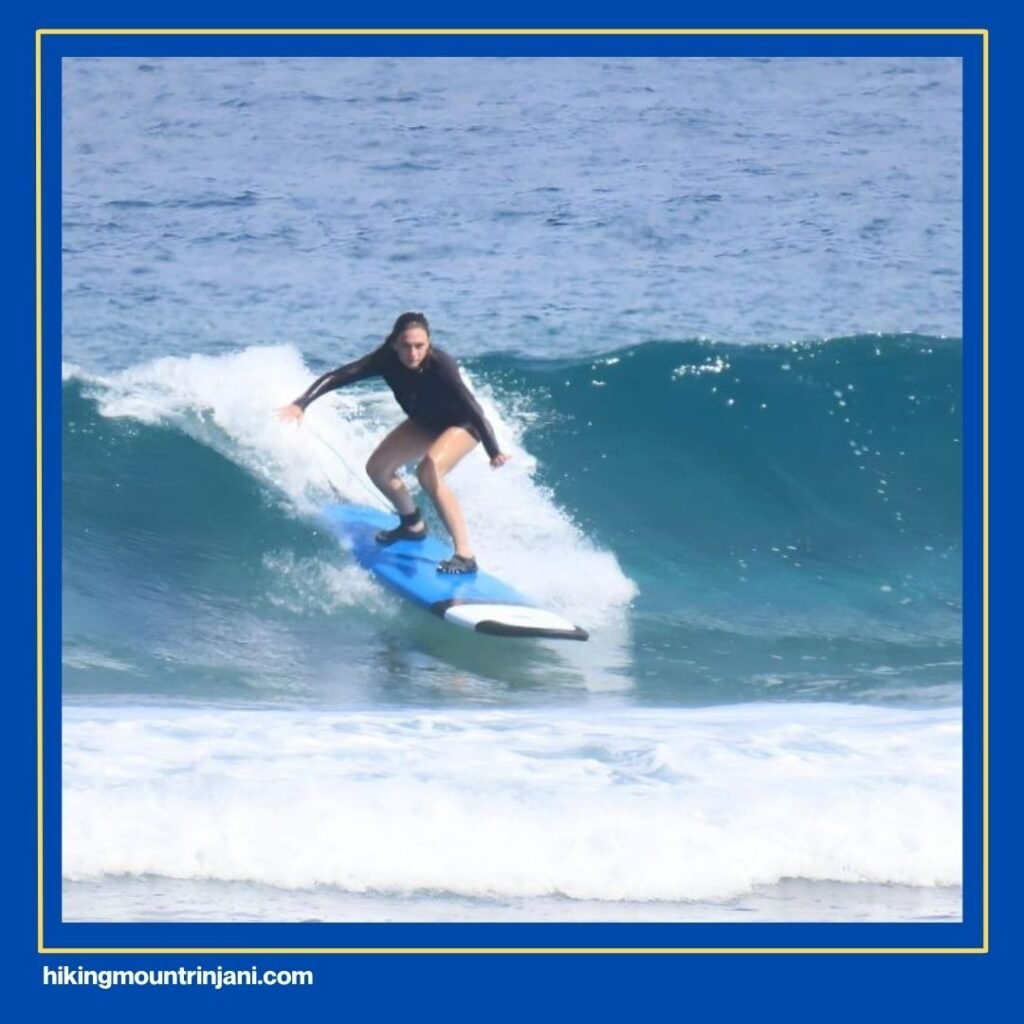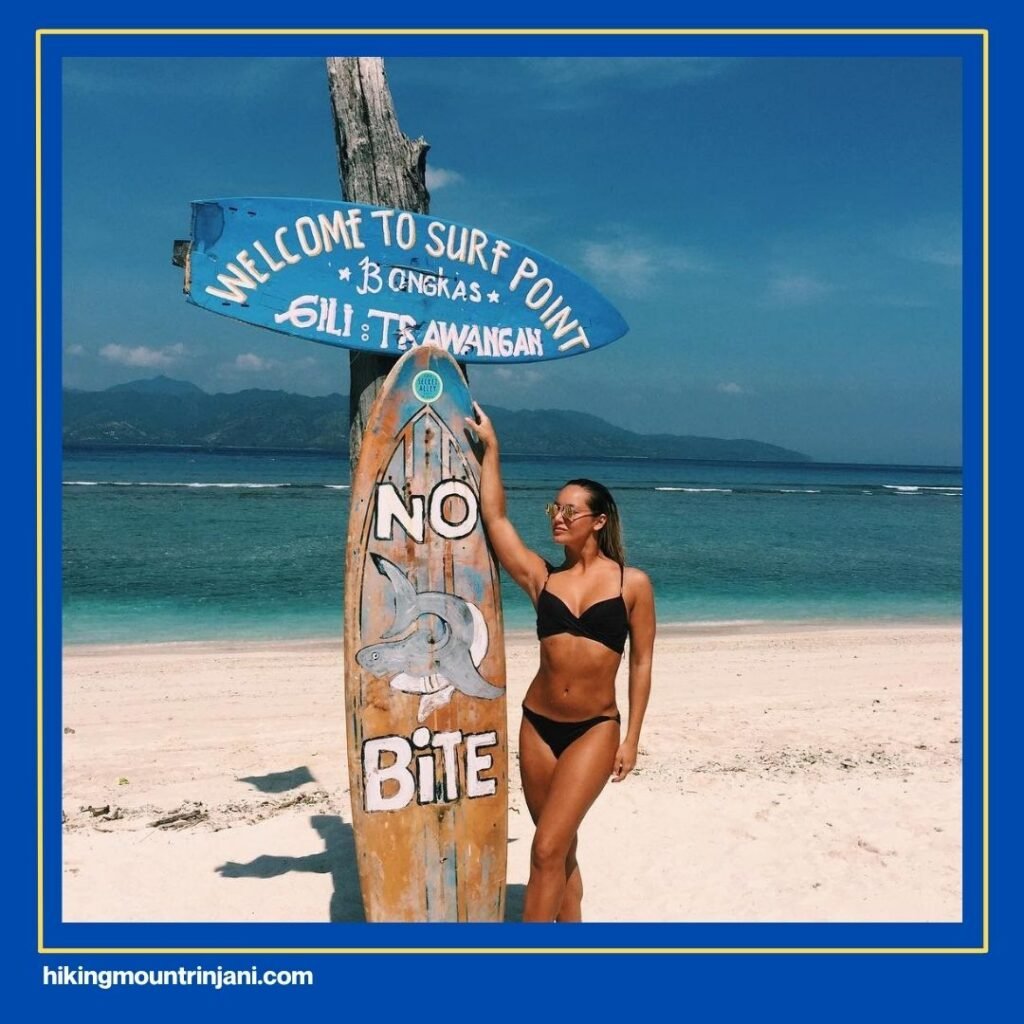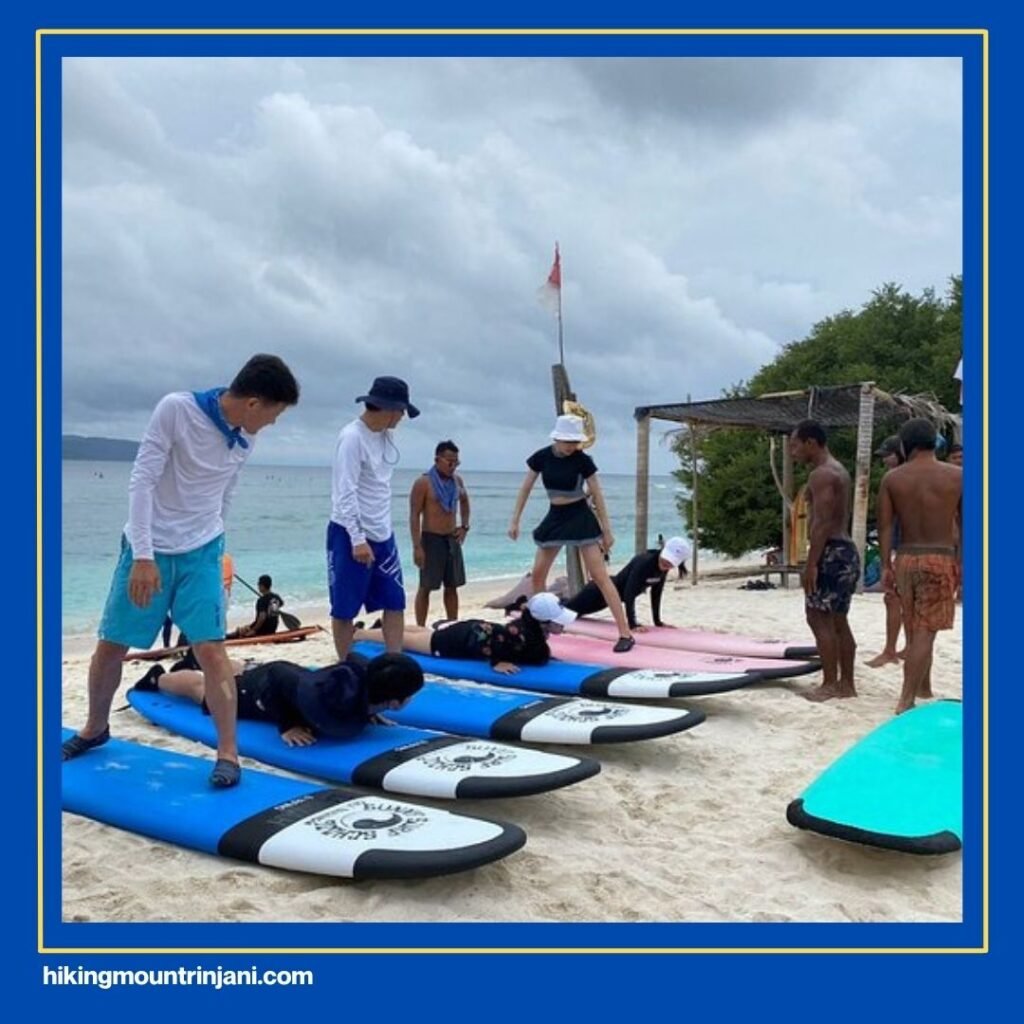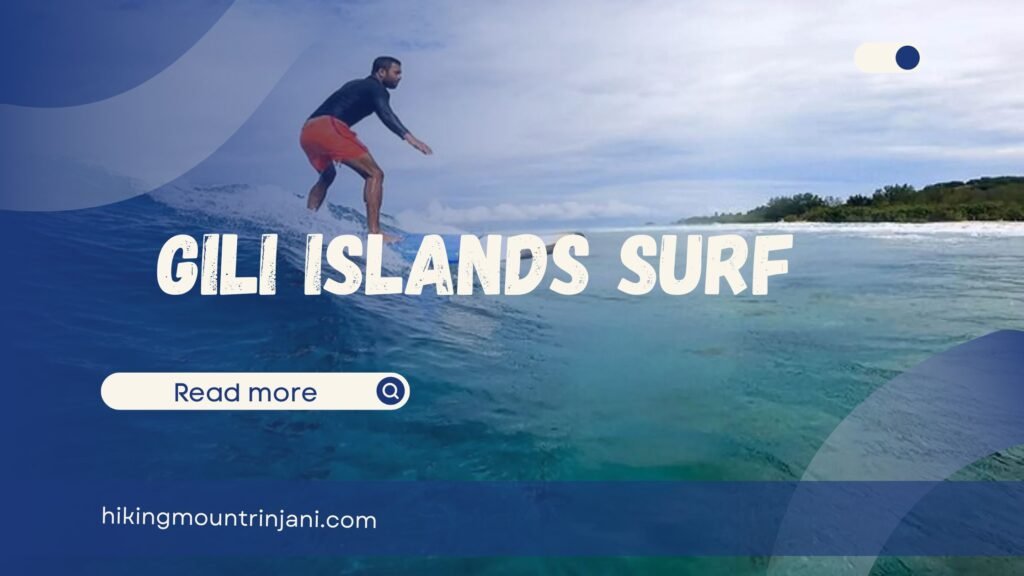When you think of the Gili Islands – Gili Trawangan, Gili Meno, and Gili Air – pristine beaches, vibrant marine life, and a laid-back vibe usually come to mind. But did you know these stunning islands, nestled off the coast of Lombok, also offer surprisingly fun surf opportunities? While they might not boast the epic barrels of Bali or the consistent power of South Lombok, the Gili Islands surf scene is a charming secret, especially for those looking to improve their skills or simply enjoy uncrowded waves in a breathtaking setting.
Why Choose the Gili Islands for Surfing?

The Gili Islands provide a unique surf experience that sets them apart:
- Less Crowded Breaks: Unlike some of Indonesia’s more famous surf spots, the Gili Islands offer a chance to enjoy the waves without intense crowds. This is perfect for learners and those who prefer a more relaxed session.
- Stunning Scenery: Imagine catching a wave with a backdrop of crystal-clear turquoise waters, white sandy beaches, and swaying palm trees. The natural beauty of the Gilis truly enhances the surfing experience.
- Reef Breaks for All Levels (with caution): While primarily reef breaks, the waves here can cater to intermediate surfers, and on smaller days, even beginners with a surf school’s guidance.
- Vibrant Island Life: When you’re not in the water, each Gili island offers its unique charm, from the lively nightlife of Gili T to the tranquil serenity of Gili Meno.
Best Surf Spots in the Gili Islands

The main surf breaks are typically found on the southern sides of Gili Trawangan, Gili Air, and Gili Meno. Remember, these are mostly reef breaks, so reef booties are highly recommended to protect your feet!
1. Gili Trawangan Surf
- Main Spot: The primary surf action on Gili Trawangan is concentrated on its south coast. The most talked-about spot is often called “Playgrounds” or “Secrets”, located approximately 100 meters off the beach at the island’s southeast corner.
- Wave Type: This is predominantly a right-hand reef break. When the swell is right, it can offer two distinct peaks and fun, peeling waves.
- Best For: Generally suitable for intermediate to experienced surfers due to it being a reef break that can be shallow, especially at low tide. Those new to the subject could face difficulties without adequate instruction.
- Hazards: Shallow reefs and sea urchins are common, so wearing reef boots is highly recommended. Strong currents can also be present.
- Access: Typically involves a short paddle or a boat ride from the beach.
- Facilities: There are numerous surf schools, surfboard rentals, and beachfront warungs (local eateries) nearby.
2. Gili Meno Surf
- Main Spot: Gili Meno, the most tranquil of the three islands, offers a more peaceful surf experience. The most popular place for surfing is situated on the western part of the island.
- Wave Type: You’ll find clean, peeling waves here, generally small to medium in size. It’s a reef break, so caution is advised.
- Best For: Often described as ideal for beginners due to its gentler waves, but it can also offer enough action for intermediates, especially when the tide is just right.
- Hazards: Like Gili Trawangan, it’s a reef break, so watch out for shallow sections and bring reef boots.
- Access: Accessible via paddle or short boat ride.
- Facilities: More limited compared to Gili Trawangan, but surfboard rentals and a few local surf instructors can be found.
3. Gili Air Surf
- Main Spot: The main surf break on Gili Air is also a reef break off the southern tip of the island. Some refer to it as “Gili Air Pertama.”
- Wave Type: A right-hand reef break that can offer short, punchy barrels when conditions align. It’s known for being quite fickle and needing precise conditions.
- Best For: Generally suitable for intermediate to advanced surfers. It can be a challenge for beginners due to the reef and the potential for strong currents.
- Hazards: Shallow reef, dumpy lips, and strong currents are notable hazards. Avoid surfing at low tide.
- Access: Requires a long paddle (over 20 minutes) or a boat ride to reach the break.
- Facilities: Fewer surf schools dedicated solely to Gili Air compared to Trawangan, but you can find rentals and instructors.
When is the Best Time for Gili Islands Surf?
The best time for surfing in the Gili Islands is generally during the dry season, from April to October. During these months, the swells are typically more consistent, and the weather is ideal for spending long days in the water. However, some breaks can also work during the wet season (October to March) with the right swell direction and winds.
- Dry Season (April – October): Increased consistency in swells, predominantly out of the south-southwest. Ideal winds are often from the east.
- Wet Season (November – March): Can still have surfable days, especially with south-southwest swells, but conditions can be less predictable with stronger winds.
Tides are crucial for Gili Islands surf spots. Most reef breaks here are best surfed at mid to high tide to ensure enough water over the coral. Surfing at low tide can be dangerous due to the shallow reef. Always check a local surf forecast or ask a surf school for the best tide times.
Surf Lessons and Rentals on the Gili Islands

If you’re a beginner eager to try Gili Islands surf, or an intermediate surfer looking for local insights and gear, you’re in luck!
- Surf Schools: You’ll find a few surf schools, particularly on Gili Trawangan, offering lessons for all levels. They typically provide:
- Qualified instructors: Locals who know the breaks inside out.
- Equipment: Surfboards (soft-tops for beginners, hardboards for intermediates), rash guards, and sometimes reef booties.
- Transport: Often includes a boat transfer to the best surf spot for the day’s conditions.
- Example (Check local providers for specific details): You can find surf schools along the main strip on Gili Trawangan. A typical 2-hour lesson might cost around IDR 350,000 – IDR 500,000, including equipment. No specific addresses or fixed opening hours are universally applicable to all, as many are small local operations. Just walk along the beachfront and you’ll easily spot them!
- Board Rentals: Many shops and guesthouses on Gili Trawangan and Gili Air offer surfboard rentals if you’re confident paddling out on your own. Prices vary, but expect to pay around IDR 50,000 – IDR 100,000 for a few hours or a full day.
Essential Tips for Surfing the Gili Islands:
- Reef Booties are a Must: Protect your feet from sharp coral and sea urchins.
- Sun Protection: The tropical sun is intense! Use high SPF waterproof sunscreen and wear a rash guard.
- Stay Hydrated: Drink plenty of water before, during, and after your session.
- Respect the Locals: Always be polite and follow surf etiquette. The locals are friendly and often happy to share tips.
- Check Conditions: The Gilis are known for being fickle. Always check the surf forecast and ask locals or surf school staff about the current conditions and best tides.
Beyond the Waves: Discover Mount Rinjani’s Majesty with Hiking Mount Rinjani!
So, you’ve embraced the beautiful Gili Islands surf, enjoyed the laid-back island vibes, and perhaps even caught some fantastic waves. If your adventurous spirit is still soaring high and you’re ready for an even grander natural spectacle, then it’s time to set your sights on Mount Rinjani!Lombok, the island just a short boat ride from the Gilis, is home to the magnificent Mount Rinjani, Indonesia’s second-highest volcano and an absolute must-do for any outdoor enthusiast. And when it comes to conquering this stunning peak, Hiking Mount Rinjani (hikingmountrinjani.com) is your ultimate partner.

